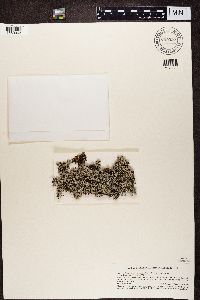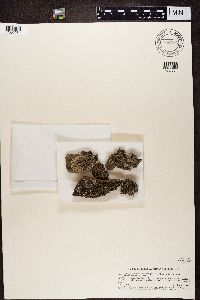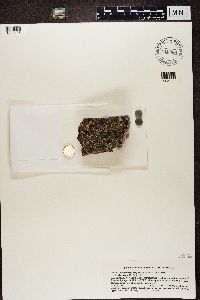University of Minnesota
http://www.umn.edu/
612-625-5000
http://www.umn.edu/
612-625-5000
Minnesota Biodiversity Atlas
Bell Museum
Dataset: MIN-Lichens
Taxa: Paraparmelia
Search Criteria: excluding cultivated/captive occurrences
1
Page 1, records 1-7 of 7
Bell Museum lichens | |
MIN:Lichens | Paraparmelia rodriguesiana (Hue) Elix & J. Johnst. 664901[]Dodge, C. s.n. Mozambique, Niassa |
MIN:Lichens | Paraparmelia columbariensis Elix & J. Johnst. 666372[]Herrera, F. 2971 Peru |
MIN:Lichens | Paraparmelia lithophiloides (Kurok.) Elix & J. Johnst. 798825[]Nash, T. 237381986-02-27 Australia, Queensland, Mt. Gravatt In Brisbane, -27.55 153.0833333 |
MIN:Lichens | Paraparmelia usitata (Brusse) Elix 869263[]Nash, T. 236621985-11-06 Saudi Arabia, 11 Km Ne of Abha, 18.26666667 42.6 |
MIN:Lichens | Paraparmelia hypoconstictica Elix & J. Johnst. 799327[1360063]Elix Australia, Queensland |
MIN:Lichens | Paraparmelia lithophiloides (Kurok.) Elix & J. Johnst. 799326[1360064]Elix Australia, Australian Capital Territory |
MIN:Lichens | Paraparmelia neoquintaria (Hale) Elix & J. Johnst. 810968[1360126]Elix Australia, New South Wales |
1
Page 1, records 1-7 of 7
Google Map
Google Maps is a web mapping service provided by Google that features a map that users can pan (by dragging the mouse) and zoom (by using the mouse wheel). Collection points are displayed as colored markers that when clicked on, displays the full information for that collection. When multiple species are queried (separated by semi-colons), different colored markers denote each individual species.


